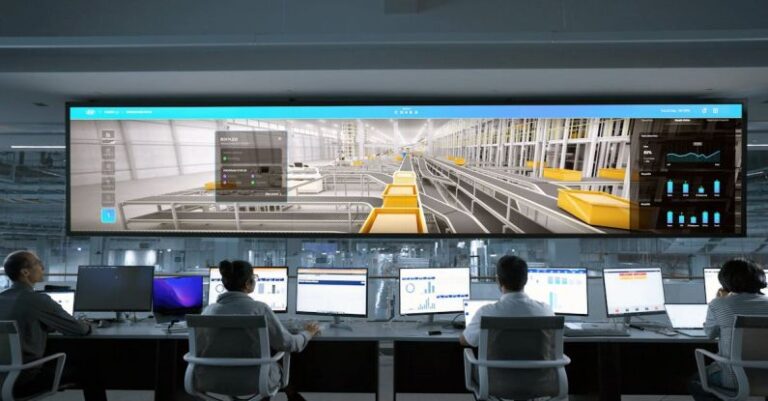
Field operations in various industries often involve complex communication challenges that can hinder efficiency and effectiveness. Whether it’s due to language barriers, environmental noise, or distance, these obstacles can lead to errors, delays, and potentially dangerous situations. However, the integration of robotics in field operations has the potential to revolutionize communication processes and overcome these barriers in ways previously unimaginable. By leveraging advanced technologies and innovative applications, robotics offer solutions that can enhance collaboration, productivity, and safety in the field. Let’s delve into how robotics can play a crucial role in bridging communication gaps in field operations.
Enhanced Remote Communication
One of the key advantages of robotics in field operations is their ability to facilitate remote communication in real-time. With the deployment of robotic devices equipped with cameras, microphones, and speakers, operators can interact with personnel in distant locations as if they were physically present. This capability is particularly valuable in situations where direct communication is challenging or impossible due to environmental constraints. For example, in hazardous environments or remote locations where human access is limited, robots can serve as the eyes and ears of operators, enabling them to oversee operations, provide guidance, and communicate vital information without putting themselves at risk.
Improved Data Transmission and Analysis
In field operations, efficient data transmission and analysis are essential for making informed decisions and optimizing processes. Robotics can significantly enhance these capabilities by collecting, processing, and transmitting data in real-time. Autonomous robots equipped with sensors and communication modules can gather data from various sources, such as equipment sensors, environmental conditions, and operational parameters. This data can then be transmitted to a central system for analysis, enabling operators to monitor performance, identify trends, and detect anomalies promptly. By streamlining data transmission and analysis, robotics can help organizations improve decision-making, reduce downtime, and enhance overall operational efficiency.
Collaborative Robotics for Teamwork
Collaborative robots, or cobots, are another valuable asset in overcoming communication barriers in field operations. Unlike traditional industrial robots that work in isolation, cobots are designed to work alongside human operators, enhancing teamwork and collaboration. These robots are equipped with advanced sensors and safety features that enable them to interact safely with humans, share workspace efficiently, and perform tasks collaboratively. In field operations, cobots can assist personnel in various tasks, such as maintenance, inspection, and logistics, thereby augmenting human capabilities and improving overall productivity. By fostering collaboration between humans and robots, organizations can overcome communication barriers, streamline workflows, and achieve higher levels of operational efficiency.
Integration of Artificial Intelligence
Artificial intelligence (AI) plays a pivotal role in enhancing the communication capabilities of robots in field operations. By leveraging AI algorithms, robots can interpret and respond to verbal commands, gestures, and other forms of human interaction more effectively. This enables operators to communicate with robots in a more intuitive and natural manner, improving the overall user experience and efficiency. Moreover, AI-powered robots can learn from past interactions, adapt to changing environments, and make autonomous decisions, further enhancing their communication capabilities. By integrating AI into robotics systems, organizations can overcome communication barriers, enhance operational flexibility, and unlock new possibilities for automation in field operations.
Empowering Remote Maintenance and Support
In field operations, maintenance and support activities are critical for ensuring the continuous operation of equipment and systems. However, accessing remote locations for maintenance and troubleshooting can be challenging, especially in hazardous or hard-to-reach environments. Robotics offer a solution by enabling remote maintenance and support capabilities that can overcome communication barriers and improve response times. Remote-controlled robots equipped with tools, cameras, and diagnostic systems can be deployed to perform maintenance tasks, conduct inspections, and troubleshoot issues in remote locations. This not only reduces the need for human intervention in dangerous environments but also enables experts to provide support and guidance from a distance, improving overall efficiency and safety.
Innovative Applications in Field Operations
The integration of robotics in field operations opens up a world of innovative applications that can revolutionize how tasks are performed and communication challenges are overcome. From autonomous drones for aerial surveillance and inspection to robotic exoskeletons for enhancing human strength and endurance, the possibilities are endless. By exploring and adopting these innovative applications, organizations can leverage robotics to streamline operations, improve safety, and enhance communication in the field. As technology continues to advance, the role of robotics in field operations is poised to grow, offering new solutions to age-old communication challenges and transforming the way work is done in various industries.
In conclusion, robotics have the potential to revolutionize communication in field operations by enabling remote communication, improving data transmission and analysis, fostering teamwork through collaborative robotics, integrating artificial intelligence, empowering remote maintenance and support, and offering innovative applications. By leveraging these capabilities, organizations can overcome communication barriers, enhance operational efficiency, and unlock new possibilities for automation in the field. As robotics continue to evolve and become more sophisticated, their role in field operations will only grow, offering unprecedented opportunities for improving communication and collaboration in diverse industries.





